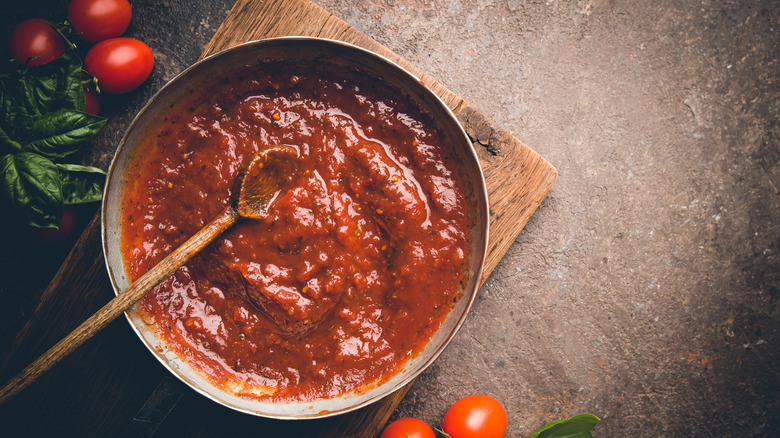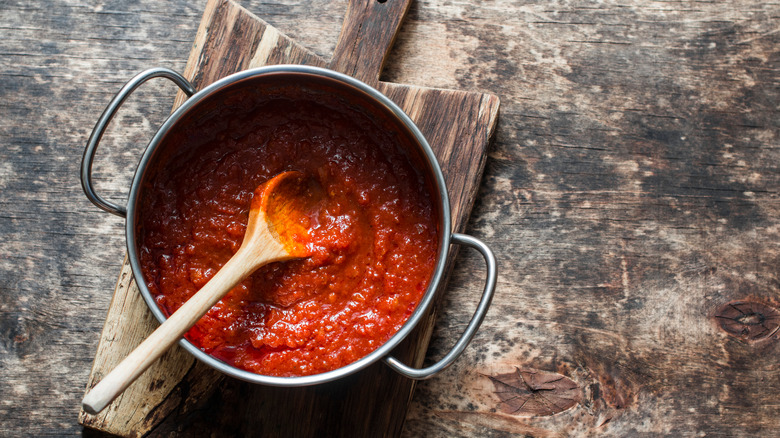You Should Start Oven-Roasting Your Tomato Sauce. Here's Why
If you like to cook and haven't been living under a rock, then you already know that roasting vegetables is one of the best ways to deepen the flavors of all kinds of vegetables, from carrots to sweet potatoes to butternut squash. According to EFNEP CCE Schoharie Otsego Counties, roasting vegetables caramelizes them, intensifying their sweetness, and it's a technique that's very commonly used with tomatoes, too — which, though technically a fruit, are usually treated like a vegetable in the kitchen.
Although pretty sweet to begin with, tomatoes that have been roasted take on an extra level of sweetness and depth of flavor: America's Test Kitchen editor Scott Kathan has called roasted tomatoes "savory, tender little umami bombs" (via CNN), so it makes sense that many recipes call for roasting tomatoes before incorporating them into sauces or soups. You may have tried roasting whole tomatoes before blending them into a sauce for pasta or pizza, but have you ever tried sticking your whole pot of prepared sauce into the oven to roast? Because that's exactly what Serious Eats recommends.
Roasting tomato sauce brings sweetness and complexity to the dish
If you've ever cooked a stew inside your oven — as opposed to on the stovetop — then you know that this technique can deepen the stew's flavor and concentrate its liquid into a thick, silky sauce. According to Kitchn, oven-cooked stews cook evenly and reduce in volume effectively because they're evenly heated from all sides and not just from the bottom of the pot. This creates a remarkable complexity of flavor in the dish, and it's a technique that Serious Eats recipe developer J. Kenji López-Alt applies to tomato sauce for the very same reasons.
He starts his sauce on the stovetop but then cooks it slowly and evenly in the oven. He tried the same approach with a simple Italian gravy-type sauce featuring canned tomatoes, onion, garlic, carrot, and fresh and dried herbs, transferring the sauce to the oven after it had come to a simmer. The sauce, in a heavy-bottomed Dutch oven with the lid slightly ajar, cooks at 300 F for between five and six hours, becoming thick, rich, and jammy as it does so.
The sauce comes out almost like a tomato jam, so to work some fresh tomato taste back in, López-Alt then adds some reserved canned tomatoes back before serving; alternatively, you could likely oven-cook your sauce for just a few hours to concentrate its flavor but not have to add more tomatoes later. Whichever route you take, your pasta and pizzas are about to acquire a new level of complexity.

